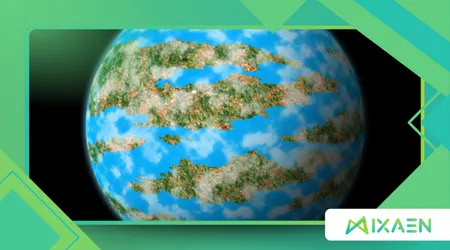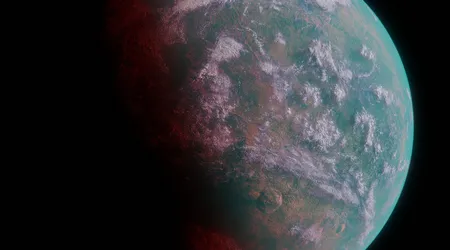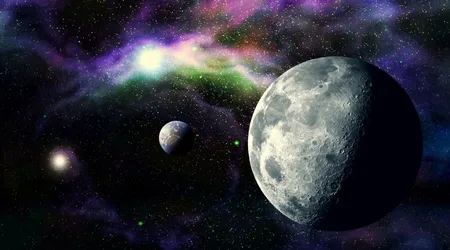Habitability Conditions: What Makes an Exoplanet Ideal

The search for life beyond Earth has always captivated humanity, but what exactly defines the perfect habitability conditions for an exoplanet?
Anúncios
As astronomers discover thousands of distant worlds, the question of which factors make a planet truly “Earth-like” becomes increasingly complex.
From the right distance to its star to the presence of liquid water and a stable atmosphere, the ideal exoplanet must meet a delicate balance of criteria.
In this exploration, we’ll dive into the science behind habitability conditions, examining the key elements that could turn a distant world into a potential home for life.
The Goldilocks Zone: Not Too Hot, Not Too Cold
One of the most critical factors in determining habitability conditions is a planet’s position within its star’s habitable zone, often referred to as the “Goldilocks Zone.”
This region is where temperatures are just right for liquid water to exist—a fundamental ingredient for life as we know it.
Too close to the star, and water evaporates; too far, and it freezes.
However, the habitable zone isn’t a one-size-fits-all concept.
For instance, a smaller, cooler star like a red dwarf has a much tighter habitable zone compared to a larger, hotter star like our Sun.
Planets orbiting red dwarfs must be much closer to their star to maintain the right temperatures, which introduces other challenges, such as tidal locking and increased stellar radiation.
On the other hand, planets in the habitable zone of larger stars might face intense ultraviolet radiation, which could strip away atmospheres over time.
+ Can Gaseous Exoplanets Host Life? Exploring the Possibilities Beyond Our Solar System
Table 1: Comparison of Habitable Zones for Different Star Types
| Star Type | Distance from Star (AU) | Key Challenges |
|---|---|---|
| Red Dwarf | 0.02 – 0.1 | Tidal locking, high radiation |
| Sun-like | 0.95 – 1.4 | Moderate radiation, stable orbits |
| Larger Stars | 1.5 – 3.0 | Intense UV radiation, shorter lifespan |
The Role of Atmosphere: A Shield and a Lifeline
While being in the habitable zone is a good start, an exoplanet’s atmosphere plays an equally vital role in creating habitability conditions.
A thick, stable atmosphere can regulate temperature, protect against harmful radiation, and even facilitate the chemical processes necessary for life.
For example, Earth’s atmosphere not only provides oxygen but also traps heat through the greenhouse effect, maintaining a stable climate.
However, not all atmospheres are created equal.
A planet with a carbon dioxide-dominated atmosphere, like Venus, experiences a runaway greenhouse effect, making it inhospitably hot.
On the other hand, a thin atmosphere, like that of Mars, fails to retain heat or shield the surface from radiation.
The ideal atmosphere must strike a balance, containing the right mix of gases to support life without triggering extreme climate effects.
Recent studies, such as those conducted by NASA’s James Webb Space Telescope, have begun analyzing the atmospheric compositions of distant exoplanets.
These findings are crucial in assessing whether a planet’s atmosphere could sustain life.
For instance, the detection of water vapor, methane, or oxygen could hint at biological activity, though these gases can also be produced by non-biological processes.

Liquid Water: The Universal Solvent
No discussion of habitability conditions is complete without emphasizing the importance of liquid water.
Water’s unique properties make it essential for life—it dissolves nutrients, facilitates chemical reactions, and provides a medium for cellular processes.
While other liquids, such as methane or ammonia, have been proposed as potential alternatives, water remains the most promising candidate for supporting life.
The presence of liquid water depends on a combination of factors, including temperature, atmospheric pressure, and the planet’s geological activity.
For example, Europa, one of Jupiter’s moons, is believed to have a subsurface ocean beneath its icy crust, kept liquid by tidal forces.
Similarly, exoplanets with active geology, such as volcanic activity, could maintain liquid water through hydrothermal systems, even if they lie outside the traditional habitable zone.
Stability: The Unsung Hero of Habitability
While the right temperature, atmosphere, and water are essential, long-term stability is often overlooked in discussions about habitability conditions.
A planet’s ability to maintain stable conditions over billions of years is crucial for the development and evolution of life.
Factors such as orbital stability, magnetic fields, and geological activity all contribute to this stability.
For instance, a planet with a highly elliptical orbit might experience extreme temperature fluctuations, making it difficult for life to thrive.
Similarly, a lack of a magnetic field could leave a planet vulnerable to solar winds, which can strip away its atmosphere over time.
Earth’s magnetic field, generated by its molten core, acts as a shield against these harmful particles, ensuring the preservation of our atmosphere and, by extension, life.
The Search for Biosignatures: Clues in the Cosmos
As we identify exoplanets with promising habitability conditions, the next step is to search for biosignatures—indicators of past or present life.
These can include specific chemical compounds, such as oxygen and methane, or even surface features like vegetation.
However, interpreting these signs requires caution, as non-biological processes can produce similar results.
For example, oxygen can be generated through photosynthesis, but it can also result from the breakdown of water molecules by ultraviolet light.
Similarly, methane can be produced by microbial life or by geological processes such as volcanic activity.
To distinguish between these possibilities, scientists rely on multiple lines of evidence, combining atmospheric analysis with observations of the planet’s surface and geology.

Table 2: Potential Biosignatures and Their Interpretations
| Biosignature | Biological Source | Non-Biological Source |
|---|---|---|
| Oxygen | Photosynthesis | Photolysis of water |
| Methane | Microbial life | Volcanic activity |
| Vegetation (red edge) | Plant life | Mineral reflectance |
++ Exoplanets orbiting dead stars: a future for Earth?
The Future of Exoplanet Exploration
The study of habitability conditions is still in its infancy, but advancements in technology are rapidly expanding our understanding.
Missions like the James Webb Space Telescope and the upcoming Extremely Large Telescope (ELT) promise to provide unprecedented insights into the atmospheres and surfaces of distant worlds.
Additionally, projects like the Transiting Exoplanet Survey Satellite (TESS) continue to discover new exoplanets, increasing the pool of potential candidates for further study.
One of the most exciting prospects is the possibility of finding an Earth 2.0—a planet with not only the right habitability conditions but also clear evidence of life.
While we may be years or even decades away from such a discovery, the journey itself is reshaping our understanding of the universe and our place within it.
Conclusion: A Delicate Balance
The quest to identify ideal habitability conditions on exoplanets is a multifaceted challenge, requiring a deep understanding of astronomy, geology, chemistry, and biology.
From the Goldilocks Zone to the presence of liquid water and stable atmospheres, each factor plays a crucial role in determining a planet’s potential to support life.
As technology advances and our knowledge grows, the dream of finding another habitable world—or even extraterrestrial life—becomes increasingly tangible.
In the end, the search for habitability conditions is not just about finding another Earth; it’s about understanding the delicate balance that makes life possible and appreciating the unique conditions that allow us to exist.
Whether we find life elsewhere or not, this journey reminds us of the fragility and beauty of our own planet, urging us to protect and cherish it.
